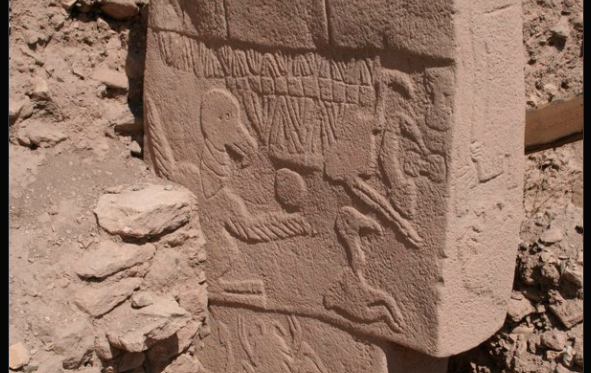The ancient monument of Göbekli Tepe in Türkiye stands as one of the most magnificent marvels of human history. This temple complex, thriving over 10,000 years ago, continues to reveal mysteries from an era long past.
Recent research has brought to light a carving that could be the earliest evidence of a calendar, used by Neolithic people to track time and seasons. While the exact use of Göbekli Tepe remains uncertain, recent findings suggest it might have functioned partly as an observatory for celestial events. Of particular interest is the Vulture Stone, which features a carved bird amidst stylized patterns.
Göbekli Tepe is a fascinating historical site that dates back to the 10th millennium BCE, making it one of the world’s oldest temple complexes. Its discovery in southeastern Turkey has dramatically transformed our understanding of early human societies and the Neolithic… pic.twitter.com/eXNfUW0iwO
— History Content (@HistContent) March 16, 2024
Chemical engineer Martin Sweatman previously showed how the Vulture Stone’s figures could represent constellations and record the impact of a comet around 13,000 years ago, coinciding with a mini ice age known as the Younger Dryas. This event likely played a significant role during the Neolithic Revolution when humans were increasingly turning to agriculture.
If you stand in front of an image showing the Last Supper lacking any information on the cultural background or ignoring the information others reconstructed, you’ll see a group of people eating. And you can interpret anything into it. That‘s happening frequently to Göbekli Tepe. pic.twitter.com/qc18BMgfMV
— Dr. Oliver Dietrich (@odietrich_) August 7, 2024
Sweatman’s latest analysis goes further, suggesting that V-shaped marks on Göbekli Tepe’s pillars represent days. He proposes that one pillar depicts a year with 365 days, consisting of 12 lunar months and 11 extra days to complete the solar year. Additionally, the bird of prey on the Vulture Stone, adorned with a V symbol, might represent the summer solstice.
Other similar symbols found on various pillars and statues suggest these marks might be related to timekeeping. Sweatman’s research also links the animals on the pillars to Earth’s precession and depicts the annual Taurid meteor shower, potentially the source of the Younger Dryas comet.
Göbekli Tepe and the Vulture Stone Prophecy We are the descendants of an ancient civilization; one which mastered technology, mapped the cosmos, and understood our relationship with the natural world. #GobekliTepe #VultureStone #Apocalypse #TheWhyFiles pic.twitter.com/sKiJPOWZJ5
— Gino Brother Why Files (@Wheres_Gino) August 2, 2024
While some archaeologists at Göbekli Tepe dispute Sweatman’s findings, his work contributes to the growing body of evidence that our ancestors were keen observers of the sky, capable of recording significant changes in their environment. This research underscores the possibility that early attempts at timekeeping and celestial observation at Göbekli Tepe could be the first steps towards the development of writing.
Key Points:
i. Göbekli Tepe is a temple complex in Türkiye over 10,000 years old, now believed to contain the earliest evidence of a calendar.
ii. The Vulture Stone’s carvings suggest it may have been used to track days, months, and years, with V-shaped marks representing days.
iii. Research links the carvings to constellations and significant historical events, like the Younger Dryas comet impact.
iv. Despite some disputes, the findings highlight the advanced observational skills of Neolithic people.
v. Göbekli Tepe’s carvings might represent early steps towards writing and recording time, inspired by celestial events.
James Kravitz – Reprinted with permission of Whatfinger News

